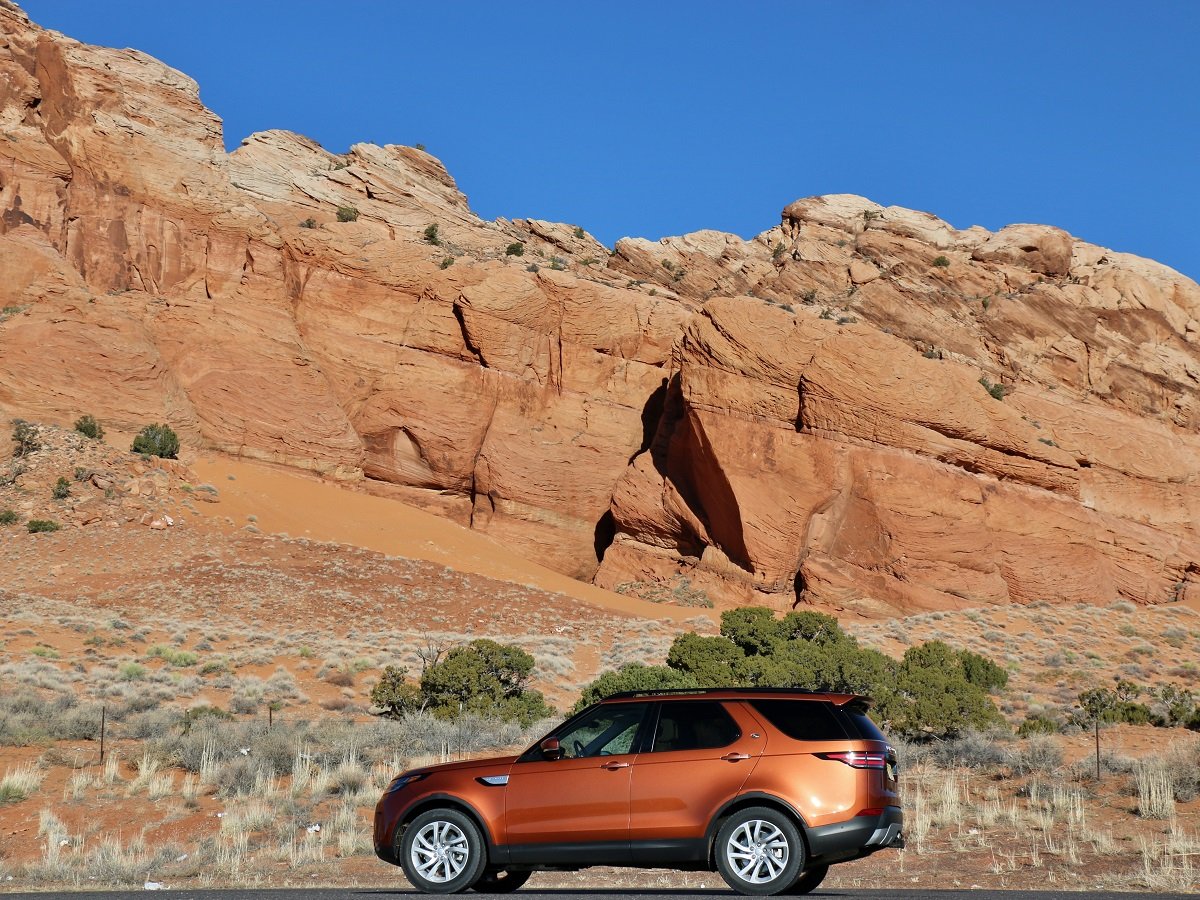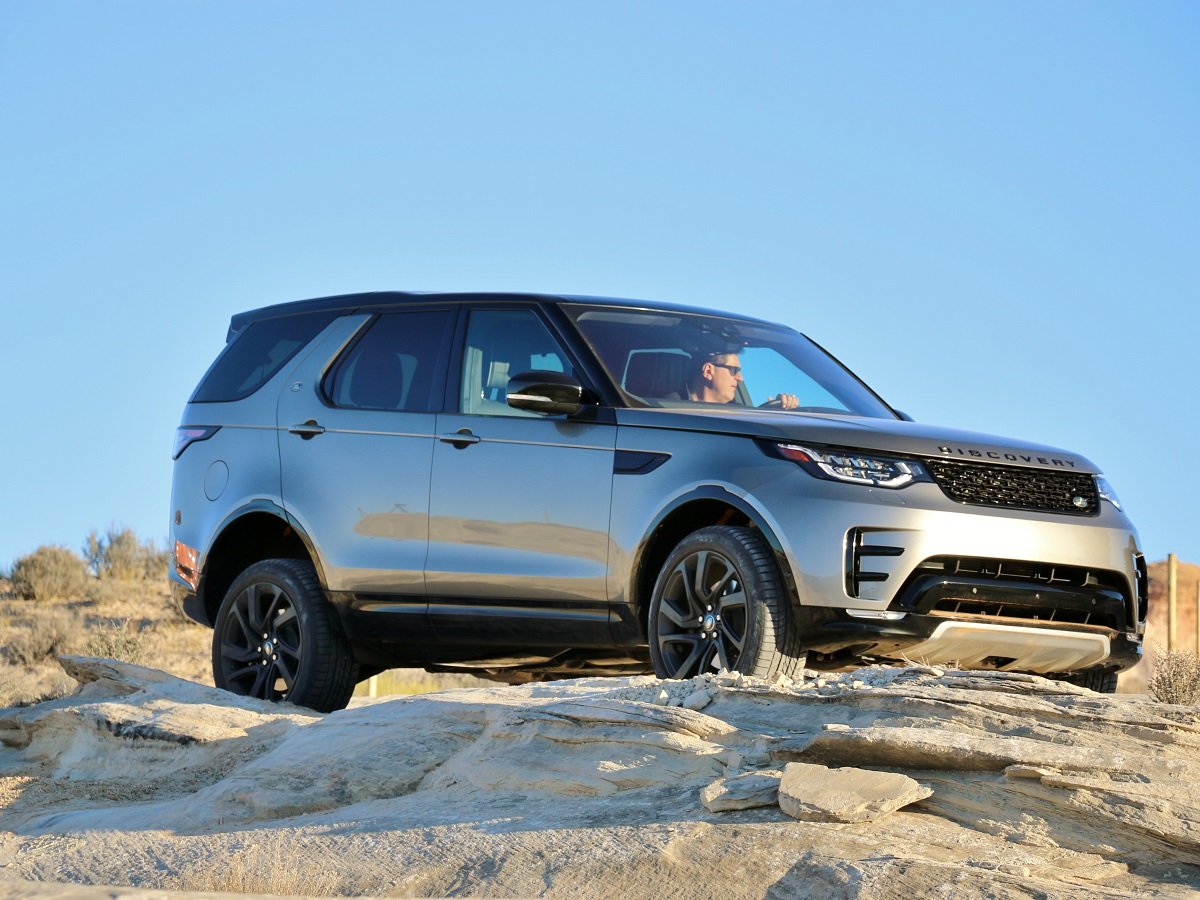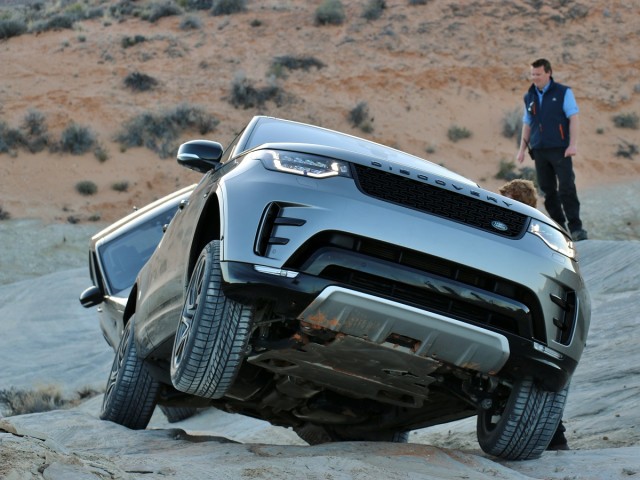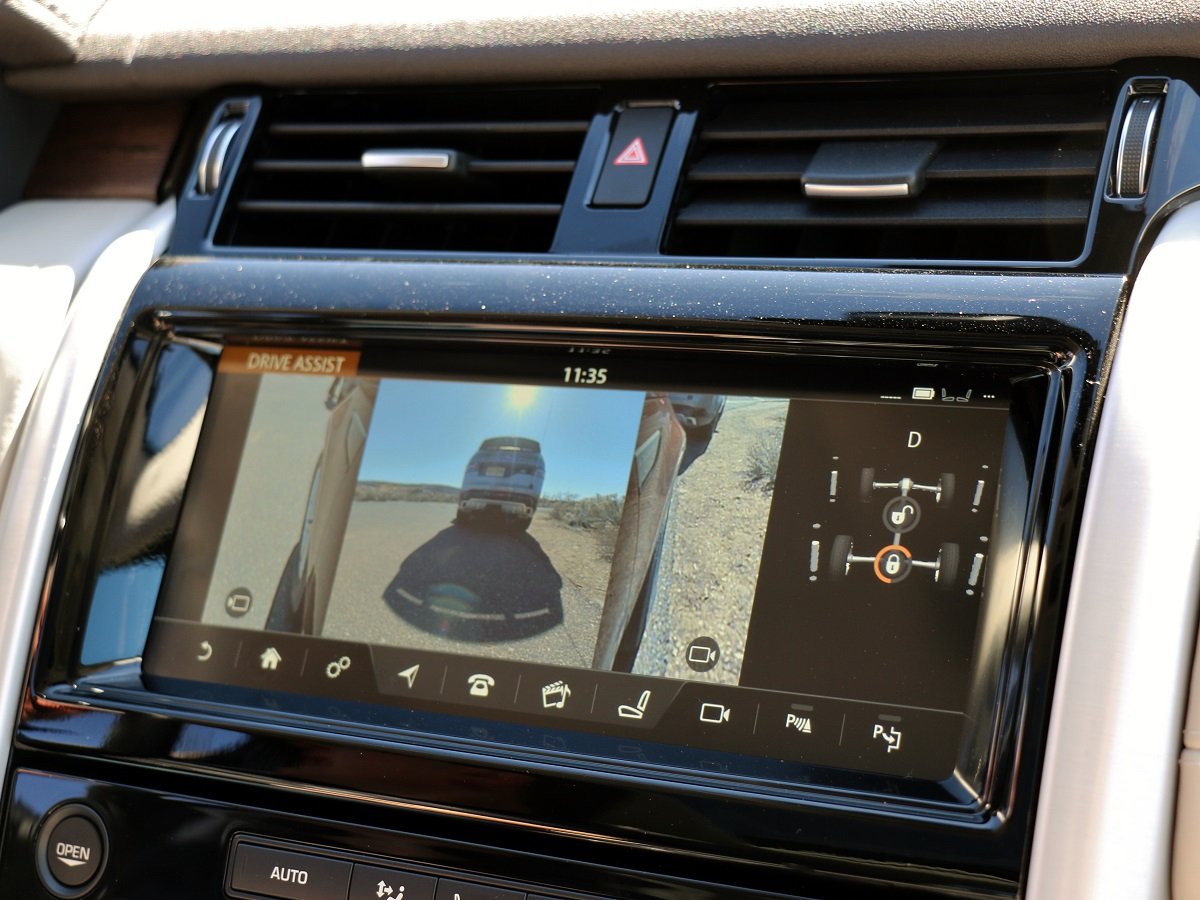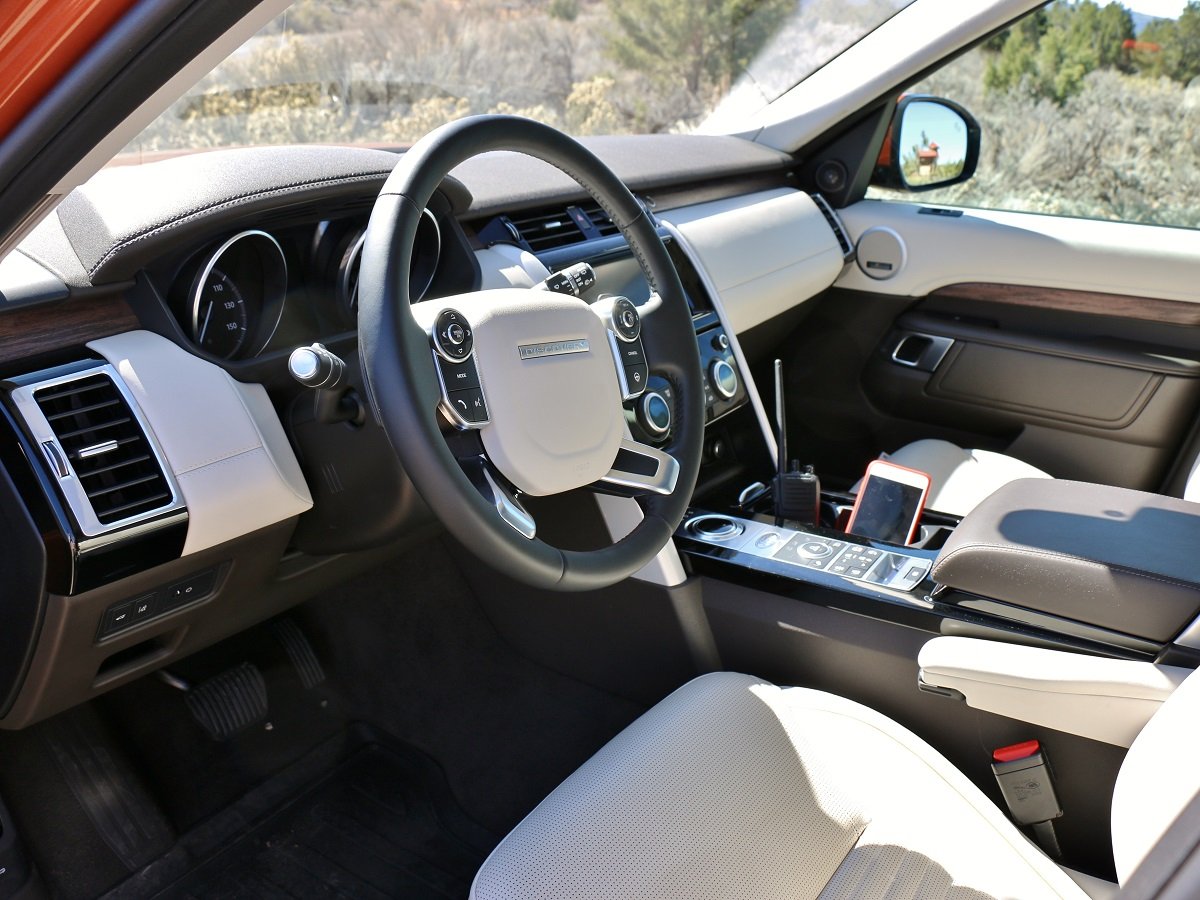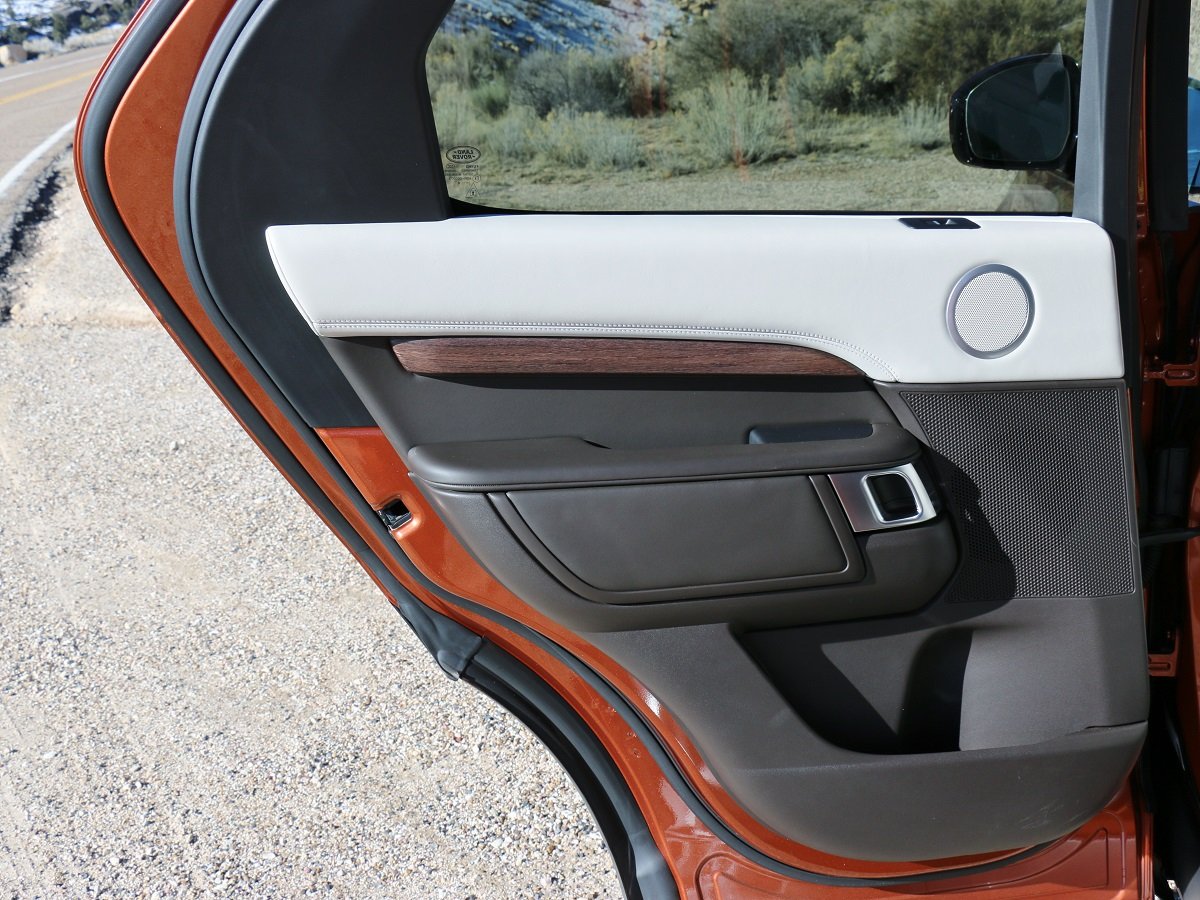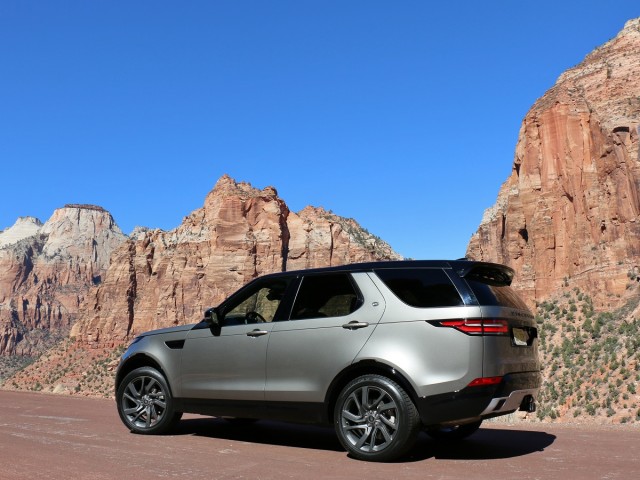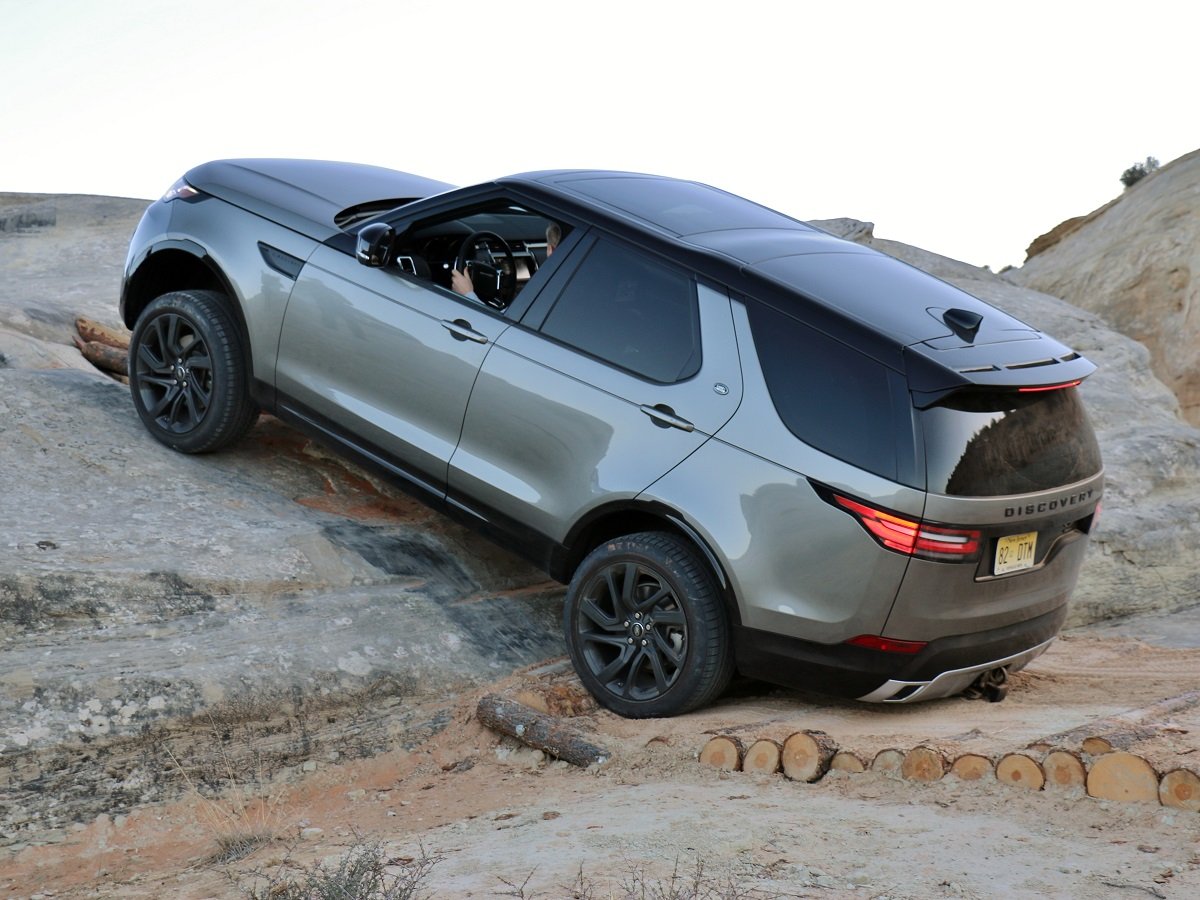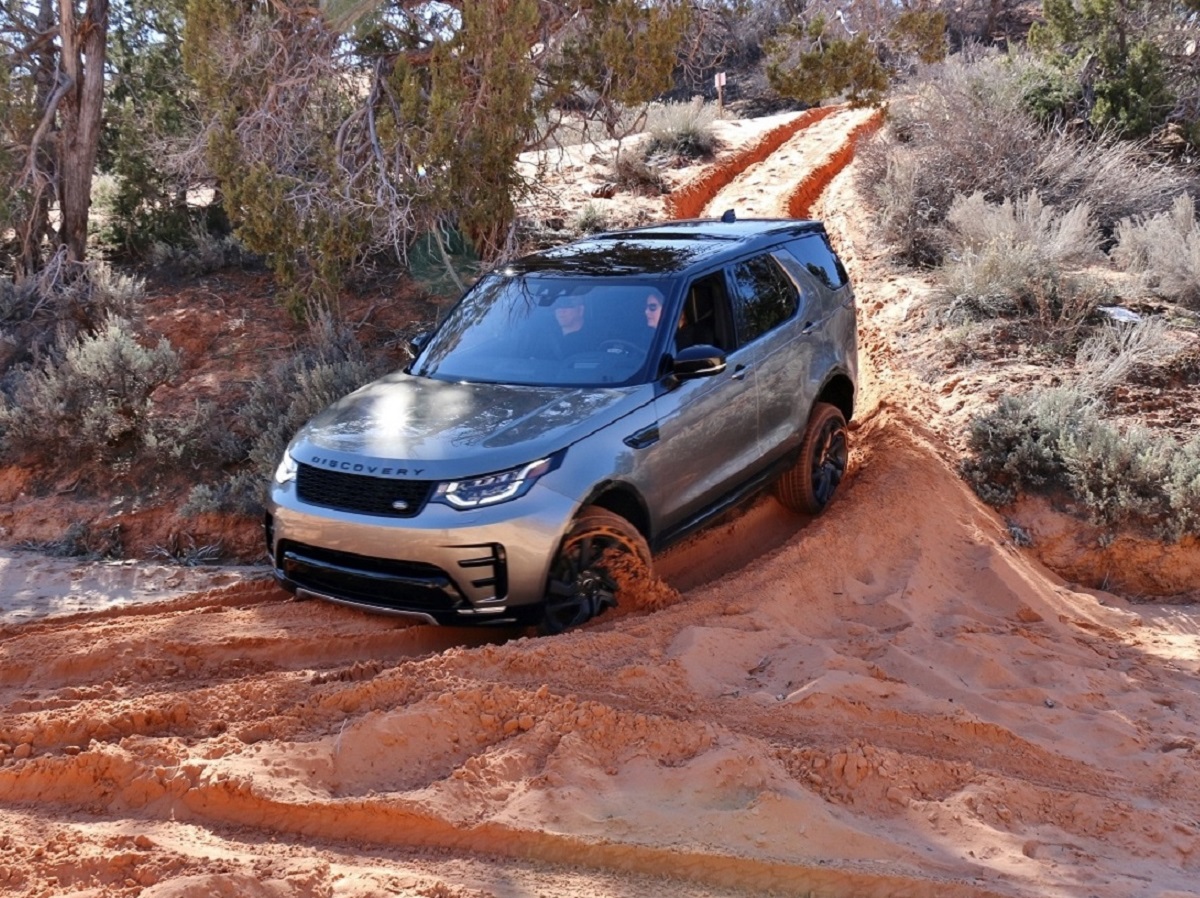In the remote areas of the United States, there are no factories. However, things are made in them: discoveries. Often, they’re untapped oil resources, the giant bones of dinosaurs, or artifacts of ancient Native American civilizations.
The Land Rover [2] Discovery is made in the Jaguar Land Rover Solihull production facility in the West Midlands, United Kingdom. Nevertheless, the company invited us to learn about it over the course of two days of on- and off-road driving through Utah and Arizona.
The SUV
It would be misleading to say the Discovery is back; in most parts of the world, it never went away. It continued to go by the name it had when Land Rover introduced the model in the late 1980s. People in the North American market knew the last two generations of it as the LR3 and LR4, respectively. Now, starting with the 2017 model year, the Discovery will be the Discovery no matter where it’s sold.
In making the switch from an alphanumeric to an established and well-known name, Land Rover switched the Discovery from body-on-frame to 85-percent-aluminum unibody construction, which helped shave more than 1,000 pounds compared to the LR4. It also threw out the right angles of the LR4’s sheet metal in favor of more aero-friendly lines.
It was hard not to enjoy the Discovery and the amazing scenery.
The new Discovery is available in five- and seven-seat configurations. In the U.S., Land Rover will offer it with two engines and in four trim levels:
- SE, starting at $49,990
- HSE, starting at $56,950
- HSE Luxury, starting at $63,950
- First Edition (2017 model year only), starting at $73,950
Tech features range from those meant for conquering nature, such as the multi-mode Terrain Response 2 and All-Terrain Progress Control systems, to keeping adventurers connected and comfortable with features including a 10-inch touchscreen for the InControl Touch Pro system, 3G WiFi, a rear seat entertainment setup, and a multitude of 12V and USB charging ports. Autonomous Emergency Braking, Blind Spot Monitor with Closing Vehicle Sensing, Lane Departure Warning, Lane Keep Assist, and a Surround Camera System are just some of the entries on the Discovery’s list of available electronic safety nets.
Exterior
One look at the Discovery and it seems clear that Gerry McGovern, Land Rover Chief Design Officer, and his team of designers decided to use the curved side of their protractors. Any front corners that might have existed in early clay models were shaved off for the metal production model. The jewel-like headlight casings flow back into the front fenders.
Above those, the windshield slopes back toward the soft swell of the stepped roof, a signature element of the Discovery model. Instead of a column, the C-pillar is now a shark fin of sheet metal. The 12 available wheel designs range in size from 19 to 22 inches. Out back, the horizontal LED tail lights curve from the rear body work into the new one-piece tailgate. This treatment of right angles as wrong led to the Discovery’s 0.35-0.36 coefficient of drag (depending on engine choice). At the same time, it made the Discovery look more crossover-like than its predecessor.
Interior
Designers focused on making the interior of the new Discovery as spacious as possible, both for people and their gear. Five- and seven-seat configurations are available. The second-row seats have 6.3 inches of forward and backward travel. We found the second row had a comfortable amount of legroom for people who are close to six-foot and plenty of headroom.
According to Land Rover, “The rearmost seats have been designed to accommodate 95th percentile adults (74.8 in. tall), so comfort is assured in every seat.” If properly equipped, the Discovery offers heated/cooled/massaging first-row, heated/cooled second-row, and heated third-row seats. Intelligent Seat Fold technology allows Discovery drivers to configure the middle and back seats in four ways, including through the Land Rover InControl Remote smartphone app.
The interior of the Discovery had all the creature comforts that you would want.
There’s 43.47 cu-ft of cargo space behind the second-row seats and 9.1 cu-ft behind the third row. There are plenty of other storage options in the Discovery, too. The upper and lower storage compartments are capable of holding more than 150 cubic inches of gadgets. If we needed to, we would’ve been able to squirrel away more than 700 cubic inches of stuff in the two glove boxes. Five tablets would’ve fit inside the center armrest. Charging those would’ve been easy thanks to the Discovery’s available maximum of six 12V outlets and nine USB charging points (when the three-row model is equipped with the rear seat entertainment package).
With such a clean looking interior it was hard to get it in the dirt.
During our trip through the American West, we didn’t really need any of that room. However, we did use the optional powered Inner Tailgate for an impromptu coffee break out in the middle of nowhere. We just lifted the rear hatch and pressed a button inside the back of the Discovery to make the Inner Tailgate fold down. Then we just sat on it, took a sip, and stretched our legs, not coming anywhere close to fully testing its 661-pound weight limit.
Powertrain
We drove a Discovery for two days. Correction: We drove a Discovery HSE Luxury with the supercharged 3.0-liter V6 (and the available Dynamic Design Package) the first day and a Discovery HSE Luxury with the turbocharged 3.0-liter diesel V6 the second day. Both are paired with an eight-speed automatic and capable of moving all 4,800-plus pounds of the Discovery at a respectable rate. The gas “Si6” gets the Discovery up to speed with 340 horsepower and 332 lb-ft of torque; the diesel “Td6” does it with 254 horsepower and 443 lb-ft. Although the diesel gets the best fuel economy of the two engines (21 city/26 highway/23 combined vs. 16/21/18), it does carry a $2,000 premium over its gas counterpart and it’s not available in base SE-grade Discoveries.
Land Rover offers the Discovery with two transfer cases. According to Land Rover, the single-speed unit “provides a torque split of 42/58 across the front and rear axles, but can redistribute torque to the axle with the most grip, up to 62/38 and 22/78 respectively.” The two-speed transfer box with high and low range gears divides torque evenly between the front and rear wheels, but can route torque between wheels depending on where grip is required.
On-Road Driving Impressions
The gas-powered Discovery took us from the rocky, craggy faces above patchy beards of scrub brush in Zion National Park through the long-faded Hollywood glamour of Kanab to the fortress of solitude that is the Amangiri resort. We drove the diesel model past the Lake Powell reservoir, along the Navajo Bridge and over the depths of the Marble Canyon, and across the constantly shifting grit of the Coral Pink Sand Dunes.
Both models were Range-Rover-like in their near-silence. We only heard noise from the tires on rough pavement. Ride quality was on the soft side, which was perfect for most of our needs because we spent close to a total of eight hours either behind the wheel or in a passenger seat. The air suspension on our test vehicle did a great job of soaking up bumps in the road, just as its Range Rover corporate cousin does.
Off-Road Driving Impressions
As good as the Discovery was on asphalt, it was even better on sand and rock. On the first day of the trip, we found out just how good the five-mode Terrain Response 2’s Auto setting was. We just engaged that, boosted the air suspension to its max height to free up all of the Discovery’s 11.14 inches of ground clearance, and tore through a serpentine course at the Springdale sand tracks. TR2 adjusted a variety of systems, including the throttle response and steering, to perfectly suit the ground we were covering.
All we had to do was input small steering corrections to keep the Discovery headed the correct way and stay on the throttle to make sure we didn’t lose momentum. We used the same combination of calibrations the second day of the event when we tackled the Coral Pink Sand Dunes in a diesel Discovery. Sand can be tricky to drive on, but with our stock tires aired down to 18 psi and Land Rover’s trail guides coaching us through a walkie talkie, we didn’t get stuck once.
As great as the Discovery looked, it also performed well on a multitude of different terrains.
On a giant rock formation in Canyon Point, Utah, we took the air suspension to its top floor, threw the Discovery into low gear and Rock mode, then crawled our way up, down, and around a geological mass that was indifferent to front air dams and shiny paint jobs. Our diesel Discovery test vehicle finished the course – without any cosmetic damage.
In one section, we were told to engage the All-Terrain Progress Control at its lowest speed, then just steer as we followed our guides’ directions. Once or twice, we could hear a wheel slipping and feel it preventing us from moving forward. Within a few seconds, ATPC detected the problem and fixed it, sending us forward once again.
It took nearly all of our rig’s 29.5-degree approach angle and 28-degree departure angle to make it up the most challenging incline of the afternoon, but we got to the top.
Conclusion
We were equally thrilled and impressed by the discoveries we made all along the way to that peak. During our two days with the 2017 Land Rover Discovery, it proved itself to be as comfortable on the road as it is capable off of it. Look for it at your local U.S. Land Rover dealership starting in mid-2017.


